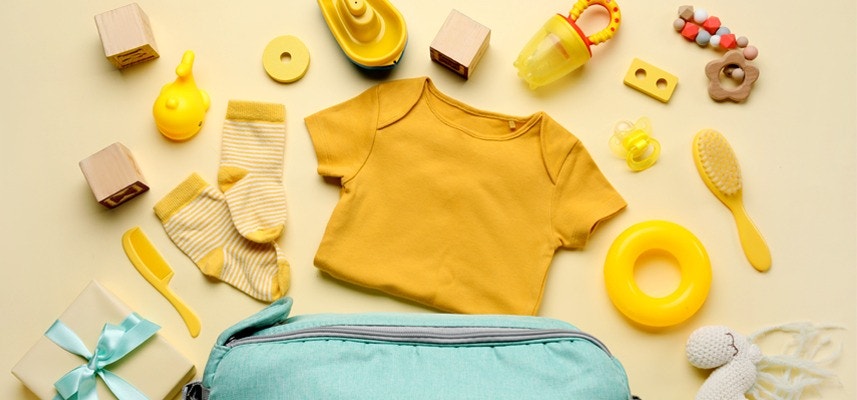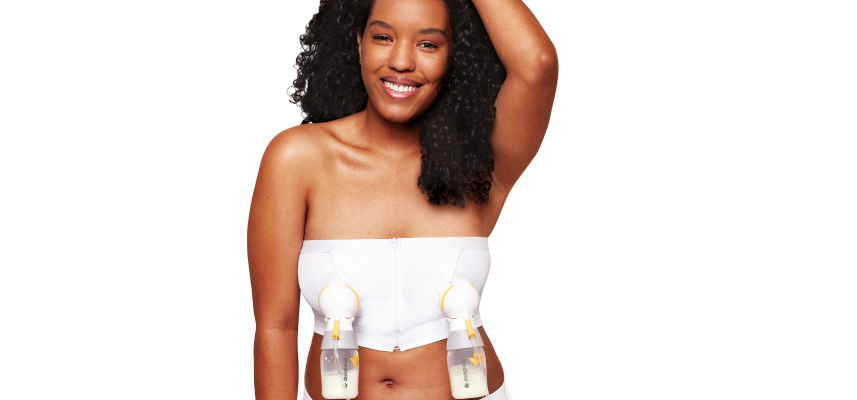Many mamas come to us with questions on the top do's and don’ts when developing their breastfeeding plan and lactation goals. It’s normal to be concerned about how different medications and habits can affect the supply and nutritional value of your breast milk. That's a healthy and good curiosity, so kudos!
Luckily, there is a ton of research on the subject. Here are some of the most important things to keep in mind when transitioning into breastfeeding, attempting to increase supply, and keeping both you and your baby safe and healthy.
Galactagogues and Breastfeeding
Yes, this is a funny word! Galactagogues (sometimes spelled as galactogogues) are medications and herbs used to boost breast milk supply. Many of these substances work by increasing levels of prolactin, a primary hormone in breast milk production. Studies have found that upwards of 57% of breastfeeding mothers take at least one galactagogue to increase their milk supply.
A good rule is that galactagogues should not be used to increase your breast milk supply until after other lactation-boosting methods have been tried. Other options for you include frequent milk removal from breastfeeding or pumping, correcting a painful or insufficient latch, massaging the breasts, increasing skin-to-skin time, using relaxation techniques to reduce stress and promote milk flow, and/or contacting a lactation consultant or IBCLC for breastfeeding support.
It’s also important to make sure there are no medical issues (including pre existing health conditions or chronic diseases) for a nursing mother’s low milk supply. Causes can include, but are not limited to, a thyroid gland imbalance, retained placental fragments, postpartum hemorrhage, smoking, alcohol use, diabetes, mammary gland insufficiency, and previous breast surgery.
Prescription Medication Galactagogues
The two most common galactagogue prescription medications for lactating women are Metoclopramide (Reglan) and Domperidone. Both work by increasing prolactin levels but we caution breastfeeding mamas because they can have serious adverse effects, and should only be used under the guidance of your physician. Here is important information about both.
Metoclopramide (Reglan):
- Suggested Dose: 10mg by Mouth 3-4 Times Daily
- Suggested Length of Treatment: 7-14 Days
- Side Effects: drowsiness, anxiety, depression, and restlessness. Need to avoid using if a new mother has mental health risk factors including postpartum depression (PPD), a history of PPD, or current symptoms of depression, as the risk of a very serious neurological problem called Tardive Dyskinesia has led the FDA to put a black box warning on the use of Metoclopramide.
Domperidone:
- Suggested Dose: 10-20mg by Mouth 3 Times Daily
- Suggested Length of Treatment: 7-28 Days
- Side Effects: dry mouth, abdominal pain, and cramping. Should not be used in women with a health condition called “Prolonged QTc Syndrome and all women need to have an EKG prior to starting on this medication to screen for this condition. It is dangerous to give Domperidone at the same time as some other medications, including Fluconazole (Diflucan), certain antibiotics, grapefruit juice, and marijuana/CBD. Side effects on the breastfed infant are unknown. The FDA recommends against the use of Domperidone to increase milk production and it is not currently available in the U.S.
Herbal Galactagogues
Herbs have been used throughout history and around the world to increase breastmilk production in mothers’ supplies and induce lactation. Although herbal medicines are available over the counter (OTC), much like prescription medications, they can still have serious side effects and drug interactions. Lactating women who are on blood thinners, medications for diabetes, anti-hypertensives, and seizure medications need to be especially cautious when taking herbal galactagogues due to interactions with these classes of medication.
Some of the most common and widely used herbal galactagogues, shown to be effective in increasing breast milk supply in research studies, include fenugreek, milk thistle, ginger, goat’s rue, moringa, and torbangun (Coleus).
Fenugreek
Fenugreek is a commonly used spice that works by increasing sweat production. Phytoestrogen hormones found in fenugreek increase milk flow.
- Suggested Dose: 600mg by Mouth 3-4 Times Daily
- Suggested Length of Treatment: 1-3 Weeks
- Side Effects: diarrhea (most common), dizziness, flatulence (gas), hypoglycemia (low blood sugar), loss of consciousness, skin rash, wheezing, increased risk of bleeding, body odor (maple syrup smell), and cross-reactivity with Asteraceae/Compositae family (Ragweed), and Peanuts & Fabaceae family (Chickpeas, Soybeans, and Green Peas).
- Contraindicated During Pregnancy: Causes uterine contractions and can lead to preterm labor.
- Drug Interactions: hypoglycemics (including insulin), antiplatelet drugs (aspirin, heparin, warfarin), feverfew, primrose oil.
Milk Thistle
The herbal name is known as Silymarin and it’s also called ”St. Mary’s Milk.” Milk Thistle increases prolactin levels and has weak anti-estrogenic properties.
- Suggested Dose: 420mg of Micronized Silymarin by Mouth Once Daily.
- Suggested Length of Treatment: Unknown (Duration in Studies Ranges from 28-63 Days).
- Side Effects: mild gastrointestinal issues, dry mouth, nausea, weight gain, cross-reactivity with Asteraceae/Compositae Family (Ragweed).
- Drug Interactions: lowers blood levels of phenytoin & warfarin, possible increased clearance of estrogens, and possible increased levels of statins (anti-cholesterol drugs).
Ginger
This is a popular galactagogue in Thailand and is used as a flavoring agent and condiment worldwide. Has anti-emetic (prevents nausea), antioxidant, and anti-inflammatory properties. Ginger works by increasing the blood supply to lactating breasts.
- Suggested Dose: 500mg by Mouth Twice Daily
- Suggested Length of Treatment: For at least one week after giving birth.
- Side Effects: bad taste, heartburn, abdominal discomfort, weight gain, dry mouth, headaches.
- Drug Interactions: morphine (leads to elevated levels and risk of respiratory depression), aspirin (increased bleeding risk)
Goat’s Rue
Also known as ”French Lilac” and has been used as a natural treatment for diabetes. Its mechanism of action is unknown.
- Suggested Dose: 15ml of 5% Goat’s Rue Tincture by Mouth 3 Times Daily
- Suggested Length of Treatment: Unknown
- Side Effects: hypoglycemia, diarrhea, hepatomegaly (liver enlargement), headaches, jitteriness, weakness, increased risk of bleeding and bruising (inhibits platelet aggregation).
- Drug Interactions: hypoglycemic medications for diabetes (insulin & sulfonylureas), antiplatelet and anticoagulant medications (including warfarin).
Moringa
This is a widely used galactagogue in the Philippines, where it is called ”Malunggay.” The leaves contain vitamins, minerals, essential amino acids, and glycosides. Moringa works by inducing the production of the prolactin hormone by the pituitary gland.
- Suggested Dose: 250-350mg by Mouth 3 Times Daily
- Suggested Length of Treatment: Unknown
- Side Effects: hepatotoxicity (liver damage), kidney failure, hepatorenal syndrome
- Drug Interactions: none known
Torbangun (Coleus)
From the mint family and has been used as a galactagogue for centuries by the Bataknese people of Indonesia. It works by increasing the production of secretory mammary cells.
- Suggested Dose: 150g by Mouth Daily
- Suggested Length of Treatment: Unknown
- Side Effects: increased risk of bleeding, hypotension (low blood pressure)
- Drug Interactions: calcium channel blockers, anticoagulant/antiplatelet medications, nitrates, lowers blood levels of phenytoin & warfarin.
Other herbal galactagogues include fennel seed, dandelion, marshmallow, Shatavari, seaweed, anise, basil, oats, millet, chamomile, alfalfa, turmeric, brewer’s yeast, garlic, and blessed thistle.
Lactation Teas, Tinctures, and Capsules
There are various all-natural lactation teas on the market for those who are concerned they aren’t producing enough milk. These teas contain combinations of bitter fennel, anise, coriander, fenugreek, blessed thistle, lemongrass, lemon verbena, and marshmallow root. However, there are no scientific studies on how effective these teas are in increasing milk volume.
Milk-supply boosting products are also widely available in both capsule and tincture form at pharmacies, vitamin shops, baby supply stores, and online in the U.S. The most common ingredients in these products include fenugreek, blessed thistle, nettle, and fennel. Like the lactation teas mentioned above, there is no published data as to whether these products have any true intervention on breast milk supply.
The use of galactagogues should only be made after other efforts to increase milk supply have been tried, medical causes of low milk supply have been ruled out, and a careful inquiry into potential side effects & drug interactions have been made.
As with all medications and supplements, the risks versus benefits of starting a galactagogue should be carefully weighed in consultation with your healthcare provider. Galactagogues should not be taken with a “one size fits all approach” and one that might be a good fit for you might not be a safe option for another mama due to its side effects or drug-on-drug interactions.
Medications and CBD While Breastfeeding
The majority of breastfeeding moms take at least one medication while nursing. Commonly used medications during breastfeeding include painkillers, heartburn remedies, asthma medications, and those used to treat mental health conditions, including postpartum depression and anxiety. If you are breastfeeding and/or pumping, it’s very important to check that all medications and supplements you take are safe and compatible with breastfeeding.
Thomas Hale, Ph.D. is a world expert in breastfeeding medicine and the safety of medications in breast milk. “Medications and Mother’s Milk,” is the most comprehensive resource available for finding answers to whether medications are safe to use during lactation. Dr. Hale classifies medications and supplements into five lactation risk categories (aka LRCs):
L1
Compatible: “Drug which has been taken by a large number of breastfeeding mothers without any observed increase in adverse effects in the infant.”
L2
Probably Compatible: “Drug which has been studied in a limited number of breastfeeding women without an increase in adverse effects in the infant and/or the evidence of a demonstrated risk which is likely to follow the use of this medication in a breastfeeding woman is remote.”
L3
Probably Compatible: “There are no controlled studies in breastfeeding women; however, the risk of untoward effects to a breastfed infant is possible, or controlled studies show only minimal non-threatening adverse effects.”
NOTE: Any newly FDA-approved medications automatically fall into this category.
L4
Potentially Hazardous: “There is positive evidence of risk to a breastfed infant or to breastmilk production, but the benefits from use in breastfeeding mothers may be acceptable despite the risk to the infant (e.g. if the drug is needed in a life-threatening situation or for a serious disease for which safer drugs cannot be used or are ineffective).”
L5
Hazardous: “The risk of using the drug in breastfeeding women outweighs any possible benefit from breastfeeding. The drug is contraindicated in women who are breastfeeding an infant.”
Other Resources for Medications and Breast Milk
The Infant Risk Center at Texas Tech University’s Health Sciences Center, which was founded by Dr. Hale, has a wealth of up-to-date information about the safety of hundreds of medications and supplements while breastfeeding. There is also an infant risk phone hotline for medical professionals to call for guidance.
MommyMeds and the U.S. National Library of Medicine’s Drugs and Lactation Database (LactMed) are also both excellent resources to verify if medications are safe to use while breastfeeding. These websites can be used by both parents and health care providers.
Lactation Risk Categories for Commonly Used Medications
Allergy Medications
Loratidine (Claritin): L1
Cetirizine (Zyrtec): L2
Diphenhydramine (Benadryl): L2
Fexofenadine (Allergra): L2
Antibiotics
Ampicillin: L1
Penicillin: L1
Vancomycin: L1
Cephalosporins: L1
Azithromycin (Z-pak): L2
Gentamicin: L2
Ciprofloxacin: L3
Doxycycline: L3
Chloramphenicol: L4
Antidepressants
Fluoxetine (Prozac): L2
Paroxetine (Paxil): L2
Sertraline (Zoloft): L2
Venlafaxine (Effexor): L2
Buproprion (Wellbutrin): L3
Anxiety and Sleep Medications
Citalopram (Celexa): L2
Trazadone: L2
Alprazolam (Xanax): L3
Buspirone: L3
Lorazepam (Ativan): L3
Melatonin: L3
Zolpidem: L3
Asthma Medications
Albuterol: L1
Beclomethasone: L2
Fluticasone: L3
Montelukast (Singulair): L4
Cough and Cold Remedies
Dextromethorphan: L1
Guaifenesin (Mucinex): L3
Phenylephrine: L3
Pseudoephedrine (Sudafed): L3
H1-Blockers
Famotidine (Pepcid): L1
Cimetidine (Tagamet): L2
Ranitidine (Zantac): L2
Pain Medications
Acetaminophen (Tylenol): L1
Ibuprofen (Motrin): L1
Aspirin: L3 (use only small doses)
Codeine: L3
Tramadol: L3
Thyroid Medications
Armour Thyroid: L1
Levothyroxine (Synthroid): L1
L5 medications and supplements that need to be avoided while breastfeeding include the following: all chemotherapy agents, blue cohosh (including blue ginseng, squaw root, papoose root, yellow ginseng), DHEA, disulfiram (Antabuse), radioactive iodine, isotretinoin (Accutane), Kava-Kava, Kombucha Tea, Neomycin (if topical on the nipple), and Strontium-89 Chloride.
In addition, cannabis derivatives, including marijuana, pot, weed, and tetrahydrocannabinol (THC) are L4 (potentially hazardous) and all other drugs of abuse are L5 (hazardous) and need to be avoided at all costs during lactation.
What About CBD?
CBD, or cannabidiol, is a substance called a phytocannabinoid that is derived from the cannabis plant. CBD does not cause a “high” due to a lack of psychoactive effects. CBD comes in many forms, including sprays, oils, edibles, and inhaled and vaped products. It is being investigated as a possible future medical treatment for pain, anxiety, seizures, and other neurological disorders. The only current FDA-approved use of CBD is in a prescribed form as an anti-epileptic (anti-seizure) medication.
There is a lot of confusion as to whether CBD, marijuana, and cannabis are all the same thing. THC is the psychoactive substance in marijuana that causes one to feel “high.” CBD is derived from either hemp or marijuana, which both come from the cannabis plant. Most of the CBD products that are sold in the United States come from hemp plants, which means that they contain less than 0.3% THC, and therefore do not cause a “high.” The main concern with using cannabis products, such as CBD or marijuana, while breastfeeding, is the lack of information. We do know that THC found in marijuana passes into breast milk and is metabolized by babies. This impacts their brain development, and in long-term use, can impair their cognitive abilities, visual integration, memory, problem-solving abilities, and emotional regulation.
There are also possible links between maternal marijuana usage and the later development of ADHD and hyperactivity in children. The American Academy of Pediatrics and Academy of Breastfeeding Medicine both discourage the use of marijuana and THC while breastfeeding, however, their current recommendations and protocols do not explicitly address the potential risks of hemp-derived CBD (with less than 0.3% THC). Although we don’t have evidence that CBD is, in and of itself, harmful, recent studies have shown that cannabidiol is present in mothers’ breast milk in rather large amounts. There are also increasing concerns about potentially harmful CBD product additives and contaminants that may pass into breast milk, such as heavy metals and pesticides.
Because of the lack of confirmative research about the effects of CBD, the Food and Drug Administration advises that women avoid all CBD use while breastfeeding. If you are breastfeeding and considering starting to use a CBD product, such as oils or edibles, please discuss this with your baby’s pediatrician. If you are already using CBD products while breastfeeding, try to cut back and limit your use and be sure to keep up to date on research about the safety of CBD during lactation. It is always better to be safe than sorry when it comes to the health and well-being of your little one(s).
Exercise and Breastfeeding
Some moms work hard to build and maintain their milk supply, and they understandably don’t want to do anything that might compromise their baby’s food source. But many moms prioritize exercise for their mental and physical health to improve their quality of life.Fortunately, exercise and breastfeeding can go hand in hand!
Will My Milk Supply Be Affected if I Exercise?
Breastfeeding mothers can exercise without risking a dip in supply. There is no significant impact on the quantity or quality of breastmilk that is produced during or after exercise.
This said, breastfeeding moms typically require more water than others, and exercise can increase that need even more. You may find the need to prioritize water intake before and after exercise and throughout the day as you feel thirsty. Drinking to satisfy your thirst is usually sufficient for hydration and to support your milk supply, and drinking more water will not necessarily help you produce more milk.
Does Working Out Affect the Nutritional Value of My Milk?
In addition to the already incredible benefits of breastfeeding, there is some recent research showing that physical activity can offer increased positive health benefits to your baby for long-term physical health and weight management, similar to the benefits of exercise during pregnancy. So it may be even more important than everyone previously thought!
Will the Taste of My Milk Change if I Exercise?
No. Any changes seen in breast milk after exercise are short-term and relatively minor and only occur with very high-intensity, strenuous, or exhaustive exercise. For most postpartum women easing back into exercise up to 80% of maximal exertion, there are no notable changes in breastmilk quality, quantity, or taste.
If your baby is refusing your milk after a workout, try rinsing your breasts before you breastfeed to clean it of sweat. They may also be distracted by activity at the gym or by the awkward pull of your restrictive sports bra, so it might help to take a moment to change clothes and move to someplace quiet and familiar for nursing. If you’re exercising at a very high intensity for more than 30 minutes, try waiting about an hour after exercise to allow any of the minor changes to return to normal.
I Want Diet and Exercise for Weight Loss. Will It Impact My Milk?
Restricting calories while breastfeeding is often discouraged by health professionals. Breastfeeding requires up to 500 extra calories per day above your body’s baseline metabolic rate. No matter what your calorie intake, your body will still find a way to provide your baby with the nutrients they need through your milk. Restricting calorie intake could create a nutritional deficit, which would cause breast milk nutrients to come directly from your body. This could put you at risk for bone health issues, cardiovascular damage, and hormone imbalance.
Eating enough while you’re breastfeeding is important for your well-being! Consider focusing on a healthy diet—eating only whole foods, lots of vegetables and protein, and cutting down on unnecessary sugar, rather than restricting calories altogether.
That said, losing pregnancy-related weight postpartum is an important goal for many new moms. Some women find it easy to lose weight while breastfeeding because of the increased calorie burn, but other women find that hormones make it much more difficult to drop weight while breastfeeding. Fortunately, exercise routines plus healthy eating are an excellent way to increase your muscle mass and reduce body fat without risking your milk supply or your own body’s health.
Will Exercise Cause Plugged Ducts or Mastitis?
Exercise alone should not contribute to plugged ducts or mastitis, but numerous factors could contribute to these issues. If you’ve just started exercising and you’re noticing more plugged ducts, check that your sports bra is well fitted (not pinching over breast tissue or under your arms) and limit the time you’re wearing a compressive bra before and after your workout. Try to remove milk from your breasts before exercising by nursing or pumping, and again soon after you’re done. If those strategies don’t help, you may need to back off the intensity or duration of your exercise and slowly ramp back up once the plugged ducts are resolved. Walking and swimming are low-impact exercises which are safe while being treated for mastitis.
Stretching your chest muscles and gently massaging your breast tissue can also be helpful for plugged ducts, as it promotes circulation and mobility in the whole chest region. Other strategies for plugged ducts can include moist heat, vibration, positioning strategies, and therapeutic ultrasound. If you’re experiencing plugged ducts regularly, consult with your healthcare provider or a lactation consultant to troubleshoot and figure out the best plan for you.
What Can I Do To Make Exercise Less Painful on My Breasts?
If you’re diligently emptying your breasts before and after a workout and wearing a well-fitting sports bra, but you’re still feeling tender, you may want to consider a few other things:
- There are sports nursing bras available that are adjustable with velcro straps. This can be a good option if you’re not able to remove milk for an extended period and need different levels of support as the hours pass. It can also make it easier to breastfeed your baby immediately after a workout without having to change clothes.
- The pectoralis muscles sit directly beneath the breast tissue, so if you’re working them hard they can become sore and make the whole area feel tender. Exercises that use the pectoralis muscles include push-ups, planks, and chest presses, among others. You can certainly include these exercises in your workout routines, but be sure to gradually build intensity and stretch them out in the hours and days afterward to help manage any post-workout soreness.
- Sometimes it takes a few months for your milk supply to regulate, and engorged breasts can be uncomfortable regardless of your exercise status. You may need to slow your pace just a little to keep you comfortable and give your body time to adjust to your baby’s needs.
Exercise of all kinds is good for nursing mothers and their babies. If you’re noticing changes in your milk production or baby’s behaviors when you start exercising, try some of the ideas suggested above and reach out to a certified lactation consultant to discuss what other factors might be contributing.
And there you have it, mama! If you need any assistance developing your breastfeeding or lactation plan, reach out to one of our lactation consultants or enroll in one of our classes to help you feel as prepared as possible. We are happy to help support you on your breastfeeding journey!
References
https://llli.org/news/selection-and-use-of-galactagogues-2/
https://www.pregnancybirthbaby.org.au/retained-placenta
https://www.womenandbirth.org/article/S1871-5192(23)00073-2/fulltext
https://womensmentalhealth.org/posts/asked-smoking-breastfeeding-safe/
https://www.mayoclinic.org/diseases-conditions/postpartum-depression/symptoms-causes/syc-20376617
https://www.webmd.com/mental-health/tardive-dyskinesia
https://www.mayoclinic.org/diseases-conditions/long-qt-syndrome/symptoms-causes/syc-20352518
https://www.webmd.com/vitamins/ai/ingredientmono-733/fenugreek
https://www.webmd.com/digestive-disorders/milk-thistle-benefits-and-side-effects
https://www.hopkinsmedicine.org/health/wellness-and-prevention/ginger-benefits
https://www.ncbi.nlm.nih.gov/books/NBK501817/
https://www.webmd.com/vitamins-and-supplements/health-benefits-moringa
https://www.webmd.com/vitamins/ai/ingredientmono-1044/coleus
https://www.cdc.gov/biomonitoring/Phytoestrogens_BiomonitoringSummary.html
https://www.ncbi.nlm.nih.gov/books/NBK482386/
https://www.ncbi.nlm.nih.gov/books/NBK538247/
https://medlineplus.gov/druginfo/meds/a682277.html
https://www.nccih.nih.gov/health/feverfew
https://www.webmd.com/vitamins-and-supplements/evening-primrose-oil-uses-and-risks
https://www.ncbi.nlm.nih.gov/pmc/articles/PMC3586829/
https://www.nhs.uk/conditions/statins/
https://www.ncbi.nlm.nih.gov/books/NBK526115/
https://www.ncbi.nlm.nih.gov/books/NBK513225/
https://www.mayoclinic.org/diseases-conditions/low-blood-pressure/symptoms-causes/syc-20355465
https://www.ncbi.nlm.nih.gov/books/NBK545149/
https://www.uspharmacist.com/article/breastfeeding-and-medication-safety
https://www.infantrisk.com/about-infantrisk-center
https://www.springerpub.com/hale-s-medications-mothers-milk-2023-9780826160638.html
https://www.infantrisk.com/infantrisk-center-resources
https://apps.apple.com/us/app/mommymeds/id669222544
https://www.ncbi.nlm.nih.gov/books/NBK501922/
https://www.ncbi.nlm.nih.gov/books/NBK501780/
https://www.mayoclinic.org/drugs-supplements-dhea/art-20364199
https://www.thyroid.org/radioactive-iodine/
https://www.nccih.nih.gov/health/kava
https://medlineplus.gov/druginfo/meds/a601004.html
https://www.sydney.edu.au/lambert/medicinal-cannabis/phytocannabinoids.html
https://www.ncbi.nlm.nih.gov/pmc/articles/PMC9288157/
https://www.epidiolex.com/#:~:text=EPIDIOLEX%20is%20the%20first%20and,year%20of%20age%20or%20older
https://www.ncbi.nlm.nih.gov/books/NBK563174/
https://clinicalepigeneticsjournal.biomedcentral.com/articles/10.1186/s13148-023-01519-4
https://www.ncbi.nlm.nih.gov/pmc/articles/PMC10659070/
https://www.breastfeeding.asn.au/resources/exercise-and-breastfeeding
https://www.ncbi.nlm.nih.gov/pmc/articles/PMC10107927/
https://pubmed.ncbi.nlm.nih.gov/9432092/
https://www.mayoclinic.org/diseases-conditions/mastitis/symptoms-causes/syc-20374829
https://wicbreastfeeding.fns.usda.gov/plugged-ducts-mastitis-and-thrush











